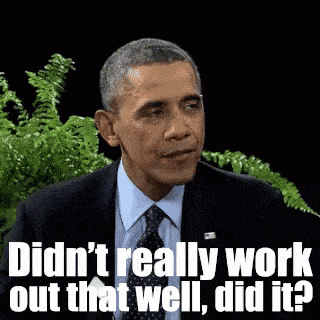We often hear crazy success stories of investors who bet big on a single stock and won big. These stories are fun and exciting and get a lot of attention because they show off the extreme reward potential of trading stocks. These stories make it seem so easy. I see far fewer stories about investors who are high-risk traders where it ends badly. These types of stories aren’t as fun to read.
However, I feel like it’s important to occasionally highlight some of these horror investment stories to show that trading stocks is not easy and the risks are real.
Most investors who have suffered serious losses are too embarrassed to speak up. But the Institutional Investor recently published an article profiling several millennial investors who ended up losing a ton of money by trading options and SPACs (Special Purpose Acquisition Companies) this past year. They all requested that their names not be published.

Without getting too deep into the weeds (but for some context), options trading allows you to buy stock with leverage. It’s very alluring to those trying to make money quickly. The leverage component with options allows you to make hundreds of a percent in a matter of minutes or days. The downside is you can lose your money just as quickly.
A SPAC is simply a publicly-traded shell company that buys private companies. This allows the purchased business to be publicly traded and available for people to invest in. SPACs have been around for decades but have recently become popular as more investors are looking for more high-risk, high-return investments.
The article tells the stories of several men — and they all happen to be men — who were egged on by chatter on Reddit and Twitter this past year and took the plunge into the risky but potentially profitable world of stock trading.

One investor, a psychiatrist, put over $300,000 worth of savings into call options and in just a few months he lost it all. He’s now scrambling just to keep up with his student loan payments. A software engineer had saved $1.6 million in cash over 20 years and decided to sink all of it into a SPAC. His entire life savings evaporated in a matter of months.
“[Robinhood] dumbs it down for you,” one guy mentioned. “If I had not used Robinhood, I would not even know how to trade options.”
Another investor started with just $1,800 and quickly turned that into $26,000. He thought that if he could keep up the same percentage gain over one year he could make it to $1 million. Well, you guessed it. He eventually lost it all.
A small-business lender who says he lost almost $600,000 commented, “You think you’re invincible until you’re not, and that’s generally what happened to me.”
These anecdotes are crazy to read about. They’re also very sad. One ill-advised investment decision wiped out years of financial growth.

Just because you take big risks does not mean you’re entitled to big rewards. As Daniel Crosby says:
“Get rich quick and get poor quick are opposing sides of the same coin.”
Even if you’ve had some success from high-risk trading in the past, that’s no guarantee that you can keep up that performance. In fact, it’s more likely that you won’t. There comes a point in everyone’s life where protecting the money you have made becomes more important than growing it. This can be a difficult mindset shift to make.
Morgan Housel talks about how getting wealthy and staying wealthy are two different skill sets. Getting money requires taking risks, putting yourself out there, and being optimistic. Keeping money requires humility and an acceptance that at least some of what you’ve made is attributable to luck, so past success can’t be relied upon to be repeated indefinitely.
Around 40% of companies successful enough to become publicly traded lost effectively all of their value over time. The Forbes 400 list of richest Americans has, on average, roughly 20% turnover per decade for causes that don’t have to do with death or transferring money to family.

One of my all-time favorite quotes from Warren Buffet is:
“Never risk what you have for something you don’t need.”
The best way to mitigate the risk of loss in investing is through diversification and time. The more diversified you are and the longer you invest the higher your likelihood of success. The upside isn’t as dazzling, at least in the short term, but it will keep you from big financial mistakes and it allows compounding to work its magic.
Good investing isn’t necessarily about making great trades, it’s more about consistently not screwing up.
Thanks for reading!

